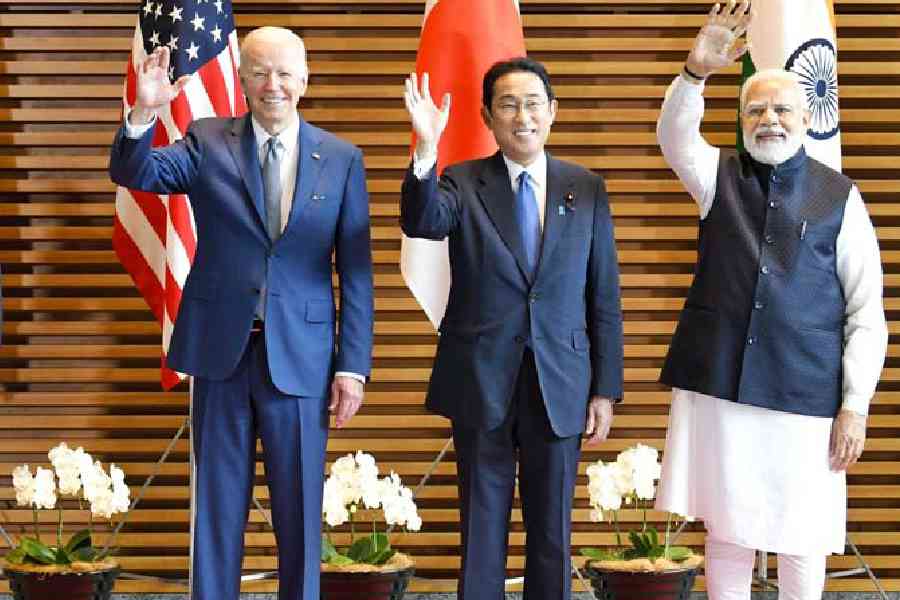There’s been considerable transformation in India’s foreign policy over the past few years. Once a proponent of the Non-Aligned Movement and G77, New Delhi is now aligned with multiple players, several of which are not at peace with each other. It is also a member of groupings such as BRICS, the Quad, the SCO, the G20 and an invitee to the G7, among other fora.
There are numerous reasons behind India’s membership of both BRICS and Quad. With the Cold War on its last legs and the disintegration of the Soviet Union, India was seeking alliances with other nation-states to fulfil its aspiration of emerging as a major Asian power. India’s entry into the nuclear club in 1998 only served to underscore its new stature. But India had a falling-out with the United States of America following the nuclear tests. The primacy of India’s foreign policy was then to cope with a ‘unipolar’ world dominated by the US with the steadfast belief that a multipolar world is a better guarantee of its interests. The US’s alliance with Pakistan — a nuclear power — also worried India. India thus chose to join the Russian initiative along with China — the RIC — to lift New Delhi’s global stature and enhance cooperation with Beijing.The RIC subsequentlybecame the BRICS forum, along with Brazil and South Africa.
But this tactical cooperation on the BRICS platform for more than two decades has not led to strategic convergence between India and China. Increase in trade, high-level meetings, and bilateral visits have not led to mutual understanding. The India-China confrontation intensified with Xi Jinping’s ascendance as China’s top leader. His Belt and Road Initiative, India alleged, penetrated New Delhi’s zone of influence in South Asia and the Indian Ocean region. China’s military pressure on India’s northern border, its military and political penetration of India’s neighbours, and its naval activity along India’s maritime periphery alarmed India.
India’s worry of a rising and assertive China led to a major shift in the former’s approach. This was compounded by Russia’s growing friendship with China in the wake of the ongoing Ukraine war, China’s ‘all-weather alliance’ with Pakistan, and a series of confrontations over disputed borders in the Himalayas. Indian policy-makers believed that it was imperative for India’s security interests to build partnerships with like-minded countries to balance China’s hegemonic tendencies. India thus embraced the Quadrilateral Security Dialogue (Quad),an informal strategic grouping comprising Australia, India, Japan and the US. Its aim is to recognise the Indo-Pacific region as a security concept and strengthen multilateral security and political coordination among the member countries. The actual motivation is to thwart China’s rise and limit its BRI project.
There is an absence of clarity in India’s approach towards the Quad. While Indian policymakers support the Quad’s growth and consolidation, they do not want a robust alliance with the US or perceive Quad’spolicy as decisive in the Indian Ocean region. To that end, India ruled out the US’s plans of conducting joint patrolling on the South China Sea. New Delhi continues to procure Russian defence equipment and oil and has not opposed Russia on the Ukraine war. The other reasons for India’s hesitation to join any security alliance are the legacy of NAM and its trade dependence on China.
India participated in the Malabar naval exercises with the US and Japan. But, keeping China’s interests in mind, it also participated in BRICS and SCO meetings with China. However, India’s balancing act could neither dissuade China from its aggression on the Indian border nor deter Russia from deepening its ties with Pakistan and China.
Strategic ambiguity and prudence inform India’ s foreign policy discourse when it comes to alignments. Whether India can afford to sit on the fence in a polarised world remains to be seen.
Aparajita Biswas is former professor and director, Centre for African Studies, University of Mumbai











